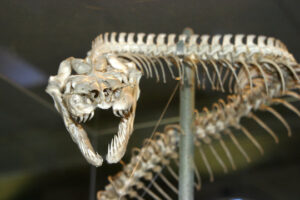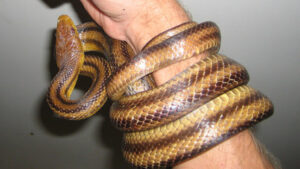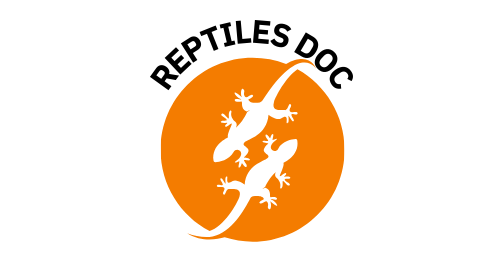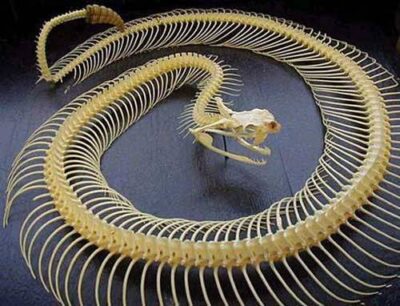Snakes are beautiful creatures that often spark curiosity due to their unique, slithering movement and lack of limbs. Their flexible bodies allow them to navigate through tight spaces, climb trees, and even swim with ease. This raises an interesting question—do snakes have spines? Unlike mammals or birds, their skeletal structure is quite different, making it hard to tell just by looking at them.
Understanding the anatomy of a snake requires a closer look at how their bodies are built and function. Their movement, strength, and agility all depend on their internal structure, which plays a crucial role in their survival. To truly grasp whether snakes have spines, it’s essential to explore their skeletal system and how it supports their way of life.
Do snakes have spines?

Yes, snakes do have spines. In fact, they have an incredibly flexible and elongated backbone that plays a crucial role in their movement and survival. Unlike humans, who have a relatively rigid spine with a limited number of vertebrae (33 on average), snakes have hundreds of vertebrae—some species can have as many as 400! This abundance of vertebrae is what gives them their remarkable flexibility and ability to slither smoothly across various surfaces.
Each vertebra in a snake’s spine is connected to a pair of ribs (except in the tail region), making their skeletal structure both strong and flexible. The joints between the vertebrae allow for an impressive range of motion, which is essential for their unique method of locomotion.
Unlike animals with legs, snakes rely on their spine and muscles to push against surfaces, propelling themselves forward in different ways, such as serpentine (side-to-side) movement, concertina motion (expanding and contracting like an accordion), and even sidewinding for sandy terrains.
The structure of a snake’s spine also provides protection for its vital organs, which are stretched along its long body. Despite having no limbs, their skeletal system is highly specialized for strength, mobility, and survival. So while they may appear boneless at first glance, snakes are actually vertebrates with a highly adapted and efficient spine that allows them to thrive in diverse environments.
Snake Skeleton Anatomy
Snakes have a highly specialized skeletal structure that allows them to be flexible, strong, and efficient hunters. Their skeletons are primarily made up of three main components: the skull, the vertebral column, and the ribs. Some species also have remnants of pelvic bones, hinting at their evolutionary past. Below is a detailed breakdown of the key parts of a snake’s skeletal anatomy:
- Skull
The skull of a snake is uniquely designed for hunting and consuming prey. Unlike most vertebrates, snakes have highly flexible skulls due to loosely connected bones, allowing them to swallow prey much larger than their head. Key features of the skull include:
- Quadrate bone – A special bone that enables extreme jaw flexibility, allowing the mouth to open wide.
- Mandibles (Lower Jaw Bones) – Not fused like in mammals; instead, they are connected by ligaments, giving them independent movement.
- Cranium – Protects the brain, though it is relatively small compared to other skull bones.
- Vertebral Column (Spine)
A snake’s spine is made up of many vertebrae, giving it extreme flexibility. Most snakes have between 200 to 400 vertebrae, categorized as:
- Cervical Vertebrae – These make up the neck region, connecting the skull to the rest of the body.
- Thoracic Vertebrae – These vertebrae support the ribs and make up the majority of the body’s length.
- Lumbar and Sacral Vertebrae – Snakes do not have a distinct separation between lumbar and sacral vertebrae as seen in mammals. Instead, their backbone is continuous.
- Caudal Vertebrae – These are found in the tail and do not have ribs attached to them.
- Ribs
Unlike humans, who have only 12 pairs of ribs, snakes have a rib attached to nearly every vertebra along their body. These ribs provide structural support and protect internal organs. The ribs are highly flexible and help expand the body while swallowing large prey.
- Vestigial Pelvic Bones (Only in Some Species)
Some species of snakes, such as pythons and boas, have tiny remnants of pelvic bones—a clue to their evolutionary past when their ancestors had legs. These pelvic spurs (small claw-like structures) are sometimes used during mating.
The skeleton of a snake is a masterpiece of nature, combining flexibility, strength, and efficiency. Every part, from the specialized skull to the elongated spine and rib structure, plays a role in their survival. This unique anatomy enables them to move smoothly, swallow large prey, and adapt to various environments, making them one of the most intriguing creatures in the animal kingdom.
How a Snake’s Spine Helps with Movement
A snake’s spine is its most essential structural feature, providing both support and flexibility. Unlike animals with legs, snakes rely entirely on their spine and muscles to move. Their movement is highly efficient and adapted to different terrains, allowing them to slither through tight spaces, climb, swim, and even burrow. Here’s how their spine plays a crucial role in their mobility:
- High Number of Vertebrae for Flexibility
Snakes have between 200 to 400 vertebrae, each connected by flexible joints. This high number of vertebrae allows for smooth, fluid motion, making their bodies highly adaptable to different environments. Unlike rigid spines in many animals, the joints between a snake’s vertebrae permit a wide range of motion, enabling them to bend and twist easily.
- Ribs Provide Structural Support
Each vertebra (except in the tail) is attached to a pair of ribs, which provide stability without sacrificing flexibility. The ribs protect internal organs while allowing the body to expand and contract during movement. This structure ensures the snake maintains balance and control as it moves.
- Muscles and Spine Work Together for Locomotion
Snakes do not have limbs, so they rely on their spine and muscles to generate movement. Their muscles are attached to the vertebrae, contracting and relaxing in a coordinated way to push the body forward. This results in different types of movement, such as:
- Serpentine (Lateral Undulation) – The most common movement, where the snake moves in an S-shaped pattern, pushing against surfaces like rocks or grass.
- Concertina Motion – Used in confined spaces, such as tunnels, where the snake bunches up its body and then extends forward.
- Sidewinding – A specialized movement for sandy or slippery surfaces, where the snake lifts parts of its body while propelling forward.
- Rectilinear Movement – A slow, straight movement using belly muscles, often used by large snakes like pythons and boas.
- Adaptability for Climbing, Swimming, and Burrowing
Because of their flexible spine and strong muscles, snakes can:
- Climb trees by gripping surfaces with their belly scales while using their spine for stability.
- Swim efficiently by moving in a wave-like pattern, pushing against the water.
- Burrow into soil by compacting loose dirt and using their body to wiggle forward.
A snake’s spine is the key to its survival, allowing it to move with precision and efficiency in various environments. With its flexible vertebrae, strong rib support, and powerful muscles, the spine enables different forms of locomotion, making snakes highly adaptable hunters and escape artists. Without this specialized skeletal structure, their unique movement would not be possible.
How Flexible Is a Snake’s Spine?

A snake’s spine is one of the most flexible in the animal kingdom, allowing for smooth, fluid motion and extreme maneuverability. Unlike humans, who have only 33 vertebrae, snakes have between 200 to 400 vertebrae, each connected by flexible joints. This high number of small, interlocking bones gives them an extraordinary range of movement, making it possible to twist, coil, and contort their bodies with ease.
- Numerous Vertebrae for Maximum Flexibility
The more vertebrae an animal has, the more flexible its spine tends to be. Each vertebra in a snake’s spine has multiple joints, allowing for small, controlled movements in various directions. These small movements add up, enabling the snake to bend into tight curves and navigate through narrow spaces without breaking its skeletal structure.
- Independent Rib Movement
Each vertebra (except those in the tail) is attached to a pair of ribs that are not fused to the breastbone (sternum) like in mammals. This means the ribs can move independently, expanding and contracting as needed. This feature contributes to the snake’s ability to:
- Expand its body while swallowing large prey.
- Squeeze through tight spaces.
- Adapt its shape depending on the terrain.
- Flexibility Without Sacrificing Strength
Despite its extreme flexibility, a snake’s spine is still strong and durable. The vertebrae are reinforced with strong muscles and ligaments, preventing excessive twisting that could cause injury. This balance of strength and flexibility allows snakes to:
- Coil their bodies tightly for striking or constricting prey.
- Slither with precision, adjusting their movements based on their surroundings.
- Climb, swim, and burrow without damaging their spine.
- Flexibility in Different Types of Movement
The flexibility of a snake’s spine allows for multiple types of locomotion:
- Serpentine Movement – The classic S-shaped slithering motion used on solid surfaces.
- Sidewinding – A specialized motion that helps desert-dwelling snakes move across loose sand.
- Concertina Motion – A method used in tunnels or when climbing, where the snake bunches up and extends forward in sections.
- Rectilinear Movement – A slow, straight-line movement used by large snakes, where the muscles pull the belly scales forward in a coordinated wave.
A snake’s spine is incredibly flexible due to its high number of vertebrae, independent rib movement, and strong yet adaptable muscle structure. This unique skeletal design allows snakes to move in diverse ways, navigate complex environments, and even stretch their bodies to consume prey much larger than their head. Without this level of flexibility, snakes wouldn’t be able to survive as efficiently in their natural habitats.
Why Are Snakes So Flexible?
Snakes are renowned for their incredible flexibility, allowing them to twist, turn, and contort their bodies in seemingly impossible ways. This flexibility is key to their survival, enabling them to move efficiently through various environments, capture prey, and evade predators. Below are the main reasons behind their impressive flexibility:
- Highly Segmented Spine
- Hundreds of Vertebrae: Unlike mammals, which typically have around 30-33 vertebrae, snakes have between 200 to 400 vertebrae along their spine. Each vertebra is connected by flexible joints, allowing for a huge range of motion.
- Articulating Joints: The joints between each vertebra are designed to pivot and twist, enabling the snake to bend and coil without straining or breaking its back.
- Flexible Rib Structure
- Ribs Attached to Each Vertebra: Except for the tail, every vertebra has a pair of ribs attached. These ribs are not fused to a breastbone like in mammals, allowing them to move independently and accommodate the snake’s body as it bends, stretches, or compresses.
- Support and Protection: The ribs provide structural support while still allowing flexibility, protecting the snake’s internal organs even as the body contorts.
- Unique Musculature
- Segmented Muscles: Snakes have complex, segmented muscles running the length of their body. These muscles work in coordination, contracting and relaxing in waves to create motion.
- Precision Control: The muscle control is so precise that snakes can perform different types of movement—like slithering, sidewinding, or concertina motion—depending on the environment and need.
- Specialized Skin and Scales
- Elastic Skin: Snake skin is stretchy, allowing the body to expand when consuming large prey and contract back down afterward. This elasticity complements their skeletal flexibility.
- Scales for Traction: The belly scales (scutes) grip surfaces, working with the spine and muscles to push the snake forward. This allows for efficient movement even without limbs.
- Evolutionary Adaptation
- Limbless Advantage: Over millions of years, snakes evolved to lose their limbs, favoring a body plan that relies on flexibility for movement and hunting. This adaptation allows them to navigate through burrows, trees, and water with remarkable ease.
- Survival Strategy: Flexibility aids in constriction (for species that subdue prey this way), fitting into tight spaces to ambush prey, and quickly escaping threats.
A snake’s flexibility is the result of a brilliantly adapted combination of a highly segmented spine, movable ribs, coordinated musculature, and elastic skin. This design not only supports their unique mode of locomotion but also underpins their entire lifestyle—from hunting to hiding. Snakes truly showcase nature’s engineering at its finest, mastering the art of movement without limbs.
Common Myths About Snake Skeletons

There are many misconceptions about snake skeletons, largely due to their limbless bodies and unique way of moving. Here are some of the most common myths and the truth behind them:
- Myth: Snakes Don’t Have Bones
- Truth: Many people assume that snakes are boneless because of their smooth, flexible movements. However, snakes are vertebrates, meaning they have a well-developed spine made up of hundreds of vertebrae and ribs. Their skeleton is what allows them to be so agile and strong.
- Myth: Snakes Only Have One Big Bone
- Truth: Some people think of a snake’s body as a single, long bone. In reality, their skeleton consists of multiple small bones, including a complex skull, a long spine with many vertebrae, and numerous ribs that provide support and protection.
- Myth: Snakes Can Dislocate Their Jaws to Swallow Prey
- Truth: While it may look like a snake’s jaw “unhinges,” it doesn’t actually dislocate. Instead, the snake’s lower jawbones are connected by stretchy ligaments, allowing them to open their mouths extremely wide to swallow large prey. Their skull also has multiple moving parts, increasing flexibility.
- Myth: Snakes Are Just One Long Tail
- Truth: Many people mistakenly think a snake’s entire body is a tail. In reality, a snake’s tail begins after its ribcage ends, which is usually near the last quarter of its body. The rest of the body contains vital organs, protected by its ribcage.
- Myth: Snakes Can Tie Themselves in Knots
- Truth: While snakes can coil and twist their bodies in intricate ways, they cannot actually tie themselves into a knot that they can’t escape from. Their flexible spine and muscle coordination prevent them from getting stuck.
- Myth: Snakes Move Like Worms Because They Don’t Have a Skeleton
- Truth: Unlike worms, which are invertebrates with no bones, snakes have a strong yet flexible skeleton that helps them move in different ways. Their movements are powered by muscles attached to their spine and ribs, allowing them to slither, climb, and even swim efficiently.
Snake skeletons are often misunderstood due to their unusual body structure and movement. Despite common myths, snakes do have bones, including a highly flexible spine and ribcage that support their mobility and survival. Understanding their anatomy helps us appreciate how these incredible creatures have adapted to their environments.
Conclusion
Snakes are fascinating creatures with a highly flexible backbone made up of hundreds of vertebrae, giving them their unique ability to slither and coil. Their spines provide essential support, protection, and movement, allowing them to navigate various terrains with ease. Do snakes have spines? Yes, they do, and their skeletal structure plays a crucial role in their survival, enabling them to strike, constrict prey, and move efficiently without limbs.

